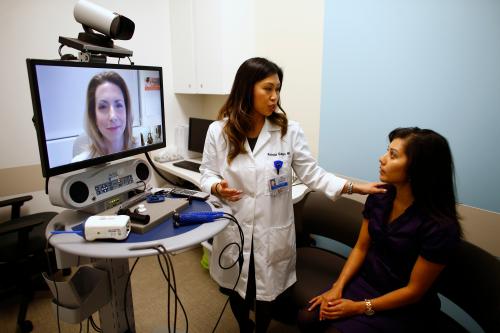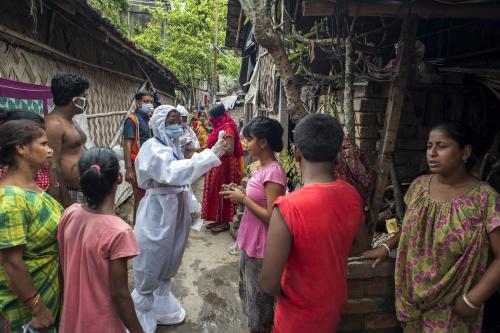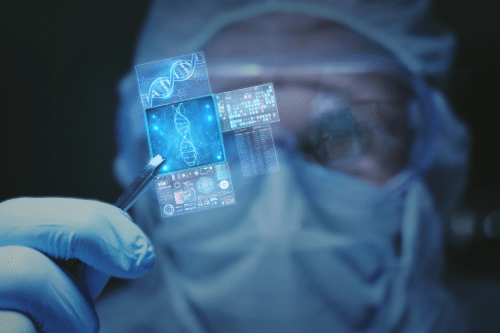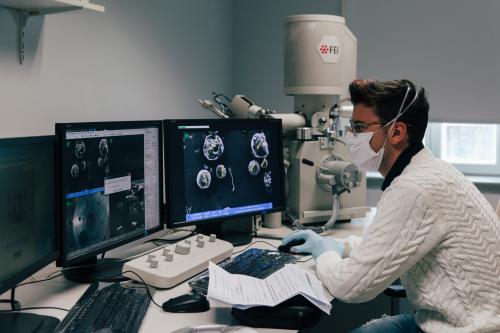The COVID-19 pandemic highlights the crucial importance of health information technology and data interoperability. The pandemic has shattered our common beliefs about the type and scope of health information exchange. It has shown us that the definition of health data should no longer be limited to medical data of patients and instead should encompass a much wider variety of data types from individuals’ online and offline activity. Moreover, the pandemic has proven that healthcare is not local. In an interconnected world, with more individuals traveling long distances than ever before, it is naïve to look at regions in isolation from each other and try to manage public health independently. To efficiently manage a pandemic like this, the scope of health information exchange efforts should not be limited to small geographical regions and instead should be done at least nationally, if not internationally.
Health data should go beyond medical records
A wide variety of factors affect one’s overall well-being, a very small fraction of which could be quantified via medical records. We tend to ignore this fact, and try to explain and predict a patient’s condition only based on medical data. Previously, we did not have the technology and knowledge to collect huge amounts of non-medical data and analyze it for healthcare purposes. Now, privacy concerns and outdated regulations have exacerbated the situation and has led to a fragmented data ecosystem. Interoperability, even among healthcare providers, remains a major challenge where exchange and analysis of non-medical data for healthcare purposes almost never happens.
The experience of countries that, despite all odds, could successfully contain the coronavirus epidemic highlights the importance of exchanging and analyzing non-medical data for successful population health management. Take Taiwan as an example: the government could merge the travel history of its citizens with their medical data and make that information readily available to health care providers. Such a simple application would allow public health officials to prioritize their containment efforts on those with high risk of being infected. The government could also alert local health care providers about the estimated number of infected people to prepare for an influx of patients in advance.
More interestingly, the public health officials in Taiwan used citizens’ mobile phones to monitor those under quarantine. Mobile data could also be easily used to precisely track the locations that patients with positive coronavirus had visited recently. Analysis of such data would provide priceless information for public health officials and helps them to better track potentially infected people.
One of the major concerns with epidemics is overburdening the healthcare system. If it goes uncontrolled, many people will need hospitalization at the same time, straining the capacity of hospitals. This problem could be mitigated if telehealth technologies could be widely adopted by patients and providers. These technologies would allow automation of monitoring of indicators such as body temperature or oxygen levels. Coupled with the other types of data such as medical and travel history of patients, they could further prioritize those who need immediate medical care. Moreover, healthcare providers could connect with many more concerned patients through telehealth technologies and alleviate unnecessary trips to emergency rooms. This would significantly reduce redundant traffic at hospitals that impedes the provision of medical services.
Health data should be exchanged nationally
Communication and exchange of data between the federal government and the local health authorities is never more important than during epidemics. The success of these efforts hinges on real-time collection and analysis of data as well as instant decisionmaking and communication to states and localities. A nationwide health information exchange could prove to be vital for early identification and even prediction of the centers of the epidemics. Such a system could enable the government to quarantine smaller areas before the virus spreads, or to efficiently allocate rare medical resources such as N-95 masks or test kits to providers in areas that are most likely to be at the center of the epidemic. Despite its benefits, the U.S. is still very far from having such an information network.
The national efforts to create a nationwide health information exchange initiated more than a decade ago. The focus of these efforts was to build regional health information exchanges and then connect those together in order to create a nationwide network. Although these efforts have not all been successful, alternative approaches have emerged. Those include interoperability within the networks of large electronic health records providers, patient mediated exchanges, and peer-to-peer direct exchanges. Coincidentally, new rules by both Office of the National Coordinator for Health IT and Centers for Medicare & Medicaid Services now require providers to adopt application programming interfaces to allow patients easily access their medical data at no cost. These new rules are huge steps toward creating a nationwide health information exchange network. They attempt to create a data ecosystem that enables more innovation involvement from private market. I believe these rules are huge steps towards a nationwide health information exchange system. Policy makers should in the meantime consider replacing regulations that hinder the exchange of health data outside of the healthcare market with the ones that protect the privacy of patients in a more compatible way with today’s technologies and demands.







Commentary
The US lacks health information technologies to stop COVID-19 epidemic
March 13, 2020